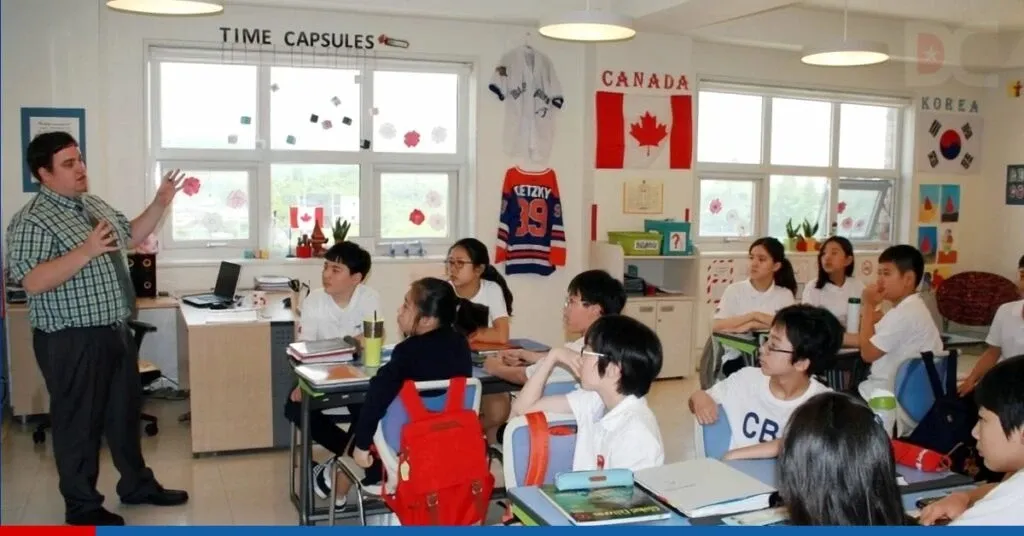How the Canadian Education System Works: From Kindergarten to University

Understanding how the Canadian education system works is key to appreciating its role in shaping a dynamic, inclusive, and globally competitive society.
Canada’s education framework, renowned for its flexibility and high standards, guides students from their first day in kindergarten to the hallowed halls of university.
This journey, spanning diverse provinces and territories, reflects a commitment to accessibility, equity, and innovation.
Yet, it’s not without its challenges—funding debates, regional disparities, and evolving societal needs keep the system in constant flux.
This article unpacks the structure, strengths, and ongoing transformations of Canadian education, offering a fresh perspective on its complexities and triumphs.
The Foundation: Early Childhood and Kindergarten
The Canadian education system begins with early childhood education (ECE), a critical phase that sets the tone for lifelong learning.
Kindergarten, typically for children aged 4 to 5, is where the journey formally starts in most provinces.
Unlike rigid academic programs, Canadian kindergartens emphasize play-based learning, fostering creativity, social skills, and emotional growth.
Imagine a classroom as a vibrant ecosystem, where young minds are seeds sprouting through exploration and guided discovery—an analogy that captures the nurturing ethos of this stage.
In Ontario, for instance, the Full-Day Kindergarten (FDK) program, implemented province-wide by 2014, offers two years of full-day learning for 4- and 5-year-olds.
This initiative, backed by research from the University of Toronto, shows that FDK boosts literacy and numeracy skills by 15% compared to half-day programs.
However, access to quality ECE varies.
Rural and Indigenous communities often face resource shortages, raising the question: How can we ensure every child, regardless of geography, starts on equal footing?
Moreover, early childhood education is increasingly recognized as a vital investment in a nation’s future.
Countries like Finland have set benchmarks for ECE that Canada can aspire to, emphasizing the importance of play and social interaction in early learning.
| Province | Kindergarten Age | Program Type | Key Features |
|---|---|---|---|
| Ontario | 4–5 | Full-Day | Play-based, literacy-focused |
| British Columbia | 5 | Full or Half-Day | Outdoor learning emphasis |
| Quebec | 5 | Full-Day | French immersion options |
+ EXPOCanada 2025 Attracts Brazilians Seeking Study and Immigration
Elementary Education: Building Core Competencies
As students progress to elementary school (Grades 1–8, ages 6–14), the system shifts focus to foundational skills: reading, writing, math, and critical thinking.
Each province tailors its curriculum, but all align with national standards emphasizing holistic development.
For example, British Columbia’s curriculum integrates environmental education, reflecting the province’s commitment to sustainability.
In contrast, Quebec’s unique system includes mandatory French instruction, even in English-language schools, fostering bilingualism.
Elementary education isn’t just about academics—it’s about shaping citizens.
Programs like Ontario’s Social Studies curriculum weave Indigenous perspectives into history lessons, addressing past injustices and promoting reconciliation.
Yet, recent budget constraints, such as New Brunswick’s $43 million cut to school districts in 2025, threaten resources like library staff, impacting literacy programs.
This tension highlights a broader challenge: balancing fiscal responsibility with educational quality.
Consider the story of Aisha, a Grade 5 student in Calgary.
Her school’s adoption of AI-assisted lesson planning, as reported by CBC News in March 2025, allows teachers to personalize math exercises, helping Aisha overcome her fear of fractions.
Such innovations showcase how technology is reshaping elementary education, making it more adaptive and inclusive.
Furthermore, ongoing research emphasizes the importance of social-emotional learning (SEL) in elementary education.
Programs that focus on SEL can improve students’ academic performance and overall well-being, creating a more supportive learning environment.

Secondary Education: Preparing for the Future
High school (Grades 9–12, ages 14–19) is where students prepare for post-secondary life.
Here, how the Canadian education system works becomes more flexible, offering academic, vocational, and arts-focused streams.
Students can pursue Advanced Placement (AP) courses, International Baccalaureate (IB) programs, or trade certifications, depending on their goals.
This diversity ensures that whether a student dreams of becoming a doctor or a carpenter, the system supports their path.
Take Liam, a Grade 11 student in Winnipeg.
Through his school’s co-op program, he spends mornings apprenticing with a local electrician, gaining credits toward graduation and real-world skills.
This blend of practical and academic learning is a hallmark of Canadian secondary education, yet it’s not universal.
Rural schools often lack access to such programs, underscoring regional inequities.
A 2023 Statistics Canada report revealed that 91% of Canadian high school students graduate on time, among the highest rates globally.
However, graduation rates for Indigenous students lag at 75%, reflecting systemic barriers like underfunded schools on reserves.
Addressing these gaps requires targeted investments, a point of contention in recent policy debates, as seen in Ontario’s 2025 school board funding disputes.
| Stream | Focus | Examples | Availability |
|---|---|---|---|
| Academic | University prep | AP, IB | Most urban schools |
| Vocational | Trade skills | Co-op programs | Varies by region |
| Arts | Creative skills | Drama, music | Urban and some rural schools |
Moreover, the emphasis on mental health support in secondary schools is gaining traction.
Programs that provide counseling and mental health resources are essential for helping students navigate the pressures of high school and prepare for the challenges of adulthood.
++ How Artificial Intelligence Is Transforming Canadian Classrooms in 2025
Post-Secondary Pathways: Colleges and Universities
After high school, students enter Canada’s robust post-secondary landscape, comprising colleges, polytechnics, and universities.
Colleges focus on applied learning—think nursing, culinary arts, or IT—while universities emphasize research and theoretical knowledge.
Both are critical to how the Canadian education system works, offering pathways tailored to diverse career goals.
For instance, Seneca College in Toronto partners with industry leaders like IBM to deliver cutting-edge tech programs, while the University of British Columbia ranks among the world’s top 40 research institutions.
Tuition affordability remains a hot topic.
In 2025, average undergraduate tuition is $7,076 per year, but provinces like Quebec cap fees for residents at $2,881, making education more accessible.
Federal and provincial student loans, coupled with scholarships, ease financial burdens, yet rising living costs challenge students in urban centers like Vancouver.
Recent news highlights Alberta’s push for work-integrated learning, with 60% of college programs now including mandatory internships, bridging the gap between academia and employment.
The system’s flexibility is a strength, but it’s not flawless.
International students, who pay triple the tuition of domestic students, face visa uncertainties, especially amid 2025’s tightened immigration policies.
Moreover, the shift to online learning, accelerated by AI tools, raises concerns about engagement and mental health, as seen in Ontario school boards’ lawsuits against social media giants for disrupting student focus.
Additionally, the rise of online education platforms offers new opportunities for learners.
Websites like Coursera and edX provide access to courses from top universities, allowing students to enhance their skills and knowledge beyond traditional classroom settings.

Regional Variations and Policy Shifts
Canada’s decentralized education system, managed by provinces and territories, creates a patchwork of policies.
Ontario’s recent move to increase ministerial oversight over school boards, as reported by CTV News in May 2025, aims to curb financial mismanagement but sparks fears of reduced local autonomy.
Meanwhile, Quebec’s 2025 secularism bill strengthens rules against religious symbols in schools, reflecting its unique cultural priorities.
These variations enrich the system but complicate standardization.
For example, Alberta’s curriculum overhaul emphasizes job-ready skills, while Nova Scotia prioritizes mental health support in schools.
Such differences reflect local values but can create uneven outcomes.
A student in rural Manitoba might lack access to AP courses available in Toronto, raising equity concerns.
Moreover, ongoing discussions about educational reform highlight the need for collaboration among provinces.
Sharing best practices and resources can help address disparities and create a more cohesive national education strategy.
Challenges and Innovations in 2025
The Canadian education system is at a crossroads.
Budget cuts, like those in Kamloops, B.C., threaten nearly 80 staff positions, as noted by CBC News in April 2025.
Simultaneously, innovations like AI-driven report cards in Calgary schools show promise.
These advancements, while exciting, risk widening the digital divide in underfunded regions.
Indigenous education remains a priority.
The Truth and Reconciliation Commission’s calls to action have spurred curriculum changes, but funding gaps persist.
In 2025, the federal government allocated $1.2 billion to Indigenous education, yet advocates argue it’s insufficient to close the graduation gap.
Additionally, the integration of technology in classrooms presents both opportunities and challenges.
While it can enhance learning experiences, ensuring all students have equal access to these resources is crucial for maintaining equity.
A System in Evolution
So, how the Canadian education system works is a story of adaptability and aspiration, weaving together diverse pathways from kindergarten to university.
It’s a system that nurtures creativity, equips students for global challenges, and grapples with its imperfections.
By addressing inequities, embracing technology, and prioritizing inclusivity, Canada continues to refine an education model that’s as dynamic as its people.
As the system evolves, its success hinges on one question: Will we invest boldly enough to ensure every student thrives?
Ultimately, fostering a culture of continuous improvement and collaboration will be essential for the future of education in Canada.
